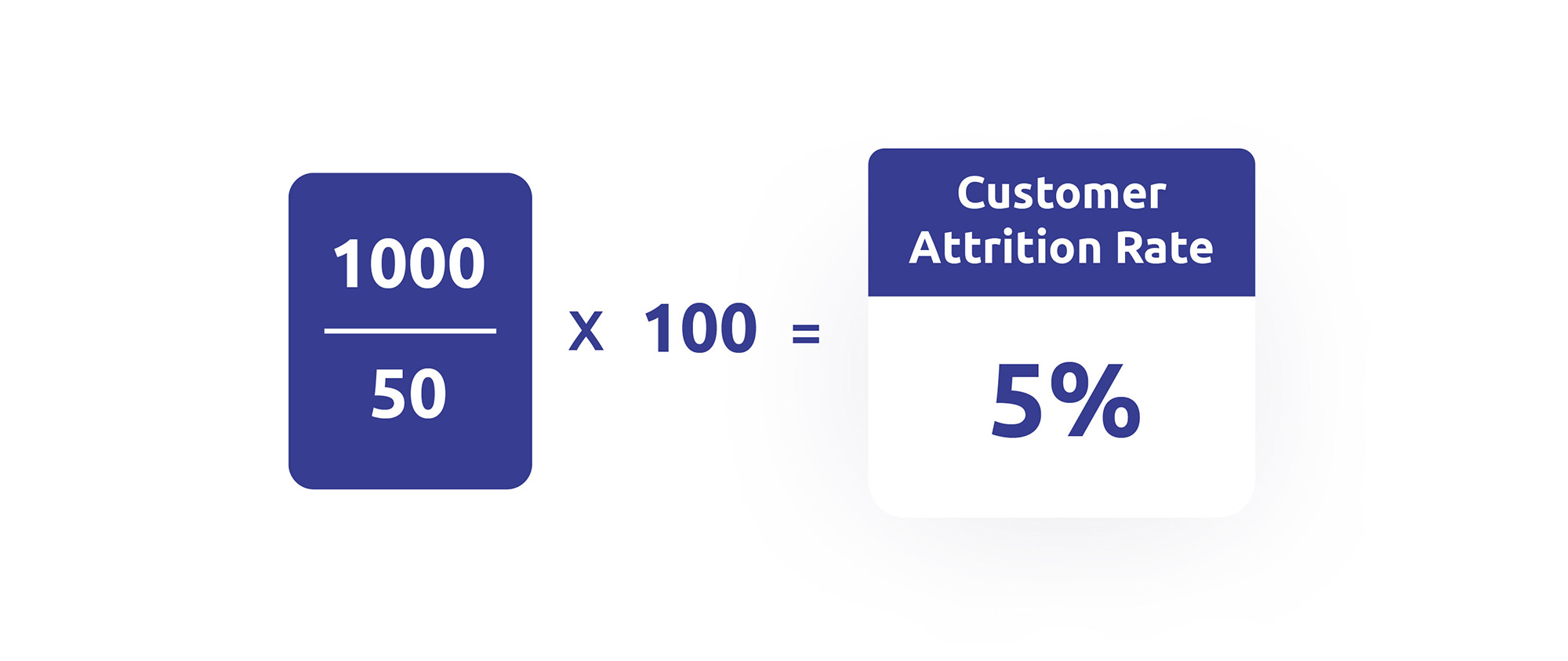Understanding the Root Causes of Customer Attrition
Before addressing attrition, it’s crucial to identify its underlying causes.
Customers rarely end their relationship with a brand due to a single incident of dissatisfaction. More often, attrition, or churn, is the result of cumulative frustrations and unresolved issues that ultimately erode trust and lead to a complete breakdown in the relationship.
Here are some of the most common drivers of customer attrition:
- Poor customer experience: Whether it’s recurring technical glitches, an unresponsive support team, or unclear sales processes, these irritants degrade the user experience and are a major contributor to customer defection.
- Products or services that no longer meet needs: As customer needs evolve, an inability to adapt your offerings can lead to disengagement. Regularly updating products and services to align with shifting market demands is essential to staying relevant.
- Lack of guidance and support: Most customers expect more than just a product; they want long-term support. If businesses focus solely on selling without prioritizing customer success and satisfaction, they inadvertently increase the risk of attrition.
- Insufficient personalization: In the age of hyper-customization, customers no longer tolerate being treated as just another number. They expect unique interactions tailored to their preferences, history, and needs. Without this level of personalization, the likelihood of churn rises significantly.
- Competitive alternatives: Even minor dissatisfaction can prompt customers to explore competitors’ offerings. If competitors appear to offer better value or benefits, the probability of attrition increases. Conducting regular competitive analysis is critical to staying ahead.
These factors, often interconnected, create a complex web of attrition drivers that must be understood to design an effective retention strategy.
How to Effectively Measure Customer Attrition
Once the causes of attrition are identified, the next step is to establish a robust system for measuring customer attrition and tracking its evolution over time. Improving retention starts with knowing exactly where you stand.
Define Metrics Tailored to Your Business
The customer attrition rate is typically calculated by comparing the number of customers lost during a given period to the total number of customers at the start of that period.
The formula is:
(Number of customers lost during a specific period / Number of customers at the beginning of the period) X 100.
For example, a business with 1,000 customers at the start of January that loses 50 by the end of the month will have a customer attrition rate of 5% for January.
However, this basic metric can be refined and adapted to suit the unique needs of different industries:
- For subscription-based businesses, monthly churn provides a granular view of customer movement within the portfolio.
- For businesses with longer sales cycles, annual attrition may be more relevant.
- For e-commerce companies, tracking churn after the first purchase is particularly insightful, as it reflects the conversion rate of first-time buyers into repeat customers.
The goal is to tailor the calculation method to your business model and objectives, ensuring the metric is actionable and meaningful.
Monitor Early Warning Signs of Attrition
While the customer attrition rate provides a macro view of retention at a specific point in time, preventing customer departures requires identifying early warning signs of attrition.
Several metrics can help forecast customer turnover risks:
- Engagement rate: This measures how frequently customers interact with your product or service. A decline in engagement often signals dissatisfaction and a heightened risk of attrition.
- Net Promoter Score (NPS): This gauges the likelihood of customers recommending your business. A dropping NPS is a clear indicator of waning interest that could quickly lead to customer defection.
- Customer Effort Score (CES): This evaluates how easy it is for customers to get answers or solutions from your business. A decline in this score highlights friction that increases the likelihood of attrition.
- Contract or subscription renewal notifications: These identify customers nearing the end of their commitment, allowing you to implement targeted retention campaigns.
Tracking these indicators alongside customer attrition rates enables businesses to take a proactive, rather than reactive, approach to customer retention.
Share Data Internally
A final best practice for effectively measuring customer turnover is ensuring that retention data is accessible across your organization.
The goal? Empower all relevant teams—marketing, sales, customer service—to track customer attrition KPIs and contribute to their improvement. This can be achieved by implementing a shared dashboard, offering customized views for different roles, and setting up alerts for early warning signs (a feature enabled by Diabolocom’s solution).
By making retention a cross-departmental priority, businesses can address customer attrition at its core and tackle it from every angle. And it all starts with precise, shared measurement of the problem.
Discover how to manage your contact center with wallboards.
Strategies to Reduce Customer Attrition
Once customer attrition has been measured and analyzed, it’s time to take action!
Here are some proven strategies to effectively lower customer attrition rates and strengthen customer relationships. Unsurprisingly, these strategies directly address the churn factors outlined earlier in this article.
Enhance the Customer Experience at Every Level
The first step in reducing customer attrition is eliminating the pain points that degrade the customer experience. This can be achieved through:
- Targeted product improvements: Fixing bugs, optimizing loading times, and enhancing usability and design.
- Redesigning customer journeys: Simplifying conversion paths, personalizing content, and streamlining customer service processes.
- Upskilling your teams: Providing training on customer experience best practices and empowering them with clear satisfaction-oriented goals.
The key is to identify the main friction points specific to your business and respond to them quickly and effectively.
Personalize the Customer Relationship with AI
To minimize attrition, few approaches are as effective as fostering a deeply personalized relationship, giving every customer the sense of being valued and recognized.
AI and machine learning technologies enable personalization at scale by:
- Tracking customer behavior in real time to adapt messages and offers accordingly.
- Predicting attrition risks by analyzing customer journeys and identifying subtle warning signs of potential defection.
- Recommending the right content at the right time, based on interests and browsing history.
These use cases represent just a fraction of what AI can achieve to personalize experiences and improve customer retention.
For a deeper dive, check out our article: “How AI Can Improve the Customer Experience.”
Deliver an Enhanced Customer Service Experience
In today’s world of increasingly demanding consumers, customer service quality is more critical than ever for loyalty.
To stand out, businesses need to provide not only seamless and responsive multichannel support but also go above and beyond by offering genuine value. The goal is to move beyond a reactive support role and become a proactive partner committed to customer success.
Here are some actionable practices:
- Proactive outreach: Reach out to at-risk customers before they disengage to address their concerns.
- Loyalty programs: Reward highly engaged customers to strengthen their sense of belonging.
- Data-driven interactions: Leverage customer data to provide context-rich and hyper-personalized responses.
- Customer onboarding and success support: Guide customers in mastering your products and achieving their goals to boost satisfaction and engagement.
By focusing on these strategies, you can transform your customer service into a powerful retention engine and foster lasting relationships with your audience.
Steps to Prevent Customer Attrition
To turn anti-churn efforts into a true competitive advantage, companies must treat it as a strategic priority and adopt a methodical approach. Here are the four essential steps to structure your plan.
1. Identify the Causes of Attrition
The first step is to thoroughly analyze why customers leave by leveraging qualitative surveys and/or data analysis.
The goal is to pinpoint recurring pain points while also understanding what motivates customers to stay—or not. This investigative work is crucial for prioritizing initiatives and guiding your action plans.
2. Map Customer Journeys
To identify moments when customers are most vulnerable to attrition, mapping their journeys and touchpoints is key.
This process provides a 360-degree view of the customer experience, helping uncover friction points and highlighting opportunities to create value at every stage.
3. Develop Personalized Retention Plans
Once at-risk customers are identified, the next step is to design tailored anti-attrition scenarios.
This might include:
- Implementing specific re-engagement programs,
- Offering solutions tailored to evolving customer needs,
- Launching win-back campaigns to recover disengaged customers.
Discover 10 effective customer retention strategies.
4. Continuously Evaluate and Adjust
Since the causes of customer attrition constantly evolve, retention is not a one-and-done effort.
Instead, it’s a continuous process requiring ongoing improvement: testing new approaches, refining predictive models, and evolving offerings to meet changing needs.
Fighting customer attrition is a long-term endeavor that should permeate the entire organization.
Conclusion
Preventing customer attrition is a strategic imperative for any company focused on growth.
By identifying the causes of churn, accurately measuring customer attrition rates, implementing personalized strategies, and engaging the entire organization in a culture of continuous improvement, businesses can transform customer retention into a true competitive advantage.
Of course, anti-attrition tactics aren’t one-size-fits-all; they need to be tailored to each industry and customer segment.
One thing, however, is clear: in an era where hyper-personalization is the norm, companies that redefine customer relationships to make them closer and more personalized will emerge as winners.
Technology—and particularly AI—is the key enabler here, unlocking unprecedented opportunities to reduce attrition in a targeted and scalable way.
Curious to know more about Diabolocom?



